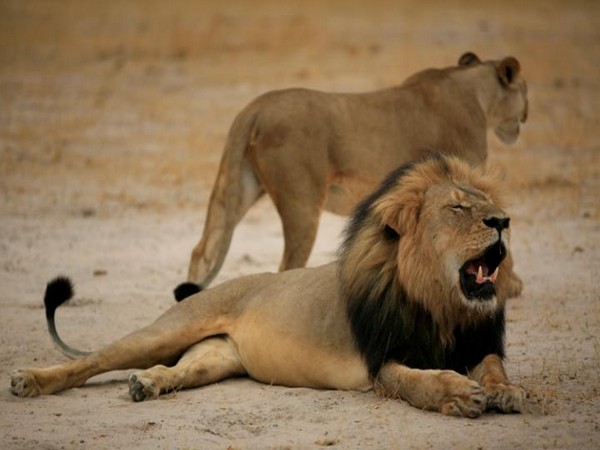Captive lion industry called for better enforcement of conservation regulations
Chetty said levels of compliance are low and can be expected to remain as such, with high profile reports of incidents of animal abuse that are affecting the reputation of the country as a premier wild-life destination.

- Country:
- South Africa
Industry associations in the captive lion industry have called for better enforcement by government to ensure that the industry conducts its business in an ethical manner and is compliant with regulations for conservation.
“The industry is large and complex, with a long history that is not aligned with both current international trends and domestic policy changes on conservation,” chairperson of the Ministerial Task Team (MTT) on voluntary exit options and pathways from the captive lion industry, Kam Chetty, said on Wednesday in Cape Town.
Chetty said levels of compliance are low and can be expected to remain as such, with high profile reports of incidents of animal abuse that are affecting the reputation of the country as a premier wild-life destination.
He was outlining the key findings and recommendations of a report by the Ministerial Task Team (MTT) on voluntary exit options and pathways from the captive lion industry.
The task team was appointed by the Minister of Forestry, Fisheries and the Environment, Barbara Creecy, in December 2022, following a recommendation by the High Level Panel on matters relating to the management, breeding, hunting, trade and handling of elephant, lion, leopard and rhinoceros.
The panel recommended the closure of the captive breeding sector, including the keeping of lions in captivity, or the use of captive lions or their derivatives commercially.
According to the report, South Africa has the largest captive lion population in the world, with increasing diversification into other carnivore species.
The report identified 7 838 lions, 626 tigers and at least 2 315 other captive carnivores, including tigers, cheetahs and servals.
Industry associations are also calling for the government to reintroduce the lion bone export quota.
“Conservation and animal welfare non-governmental organisations (NGOs) have argued strongly that the industry should be shut down, as recommended by the High Level Panel (HPL) and the Department of Forestry, Fisheries and Environment (DFFE). They, however, concede that it is a complex process and that voluntary exit should be the first steps in the process, while ensuring that the industry’s growth is halted through sterilisation of lions,” Chetty said.
Facility owners across six provinces, representing a diverse range of facility sizes and types, expressed their interest to consider voluntarily exit from the industry, pending government’s approval of the exit options.
“Some facilities are experiencing financial constraints raising concerns about their ability to comply with the well-being of lions. Most employees are not exclusively focused on tasks related to captive lions; they are also engaged in other agricultural or related activities on behalf of the facility owner,” he said
In general, stakeholders in the report back sessions supported the voluntary exit pathways. With preference being expressed for a “phase out” option, rehoming of lions in lion safe havens, and transition to more sustainable businesses.
“Conservation and animal welfare NGOs have committed to provide financial and non-financial support for Phases 1 and 2. Lion safe havens have expressed willingness to increase their capacity where possible – based on land availability and financial resources. They have also agreed to train existing facilities that want to repurpose into lion safe havens,” Chetty said.
Cabinet has approved the release of the report and its recommendations for implementation.
“South Africa is a country, with diverse cultures, remarkable geological wealth, and exceptional biodiversity, much of which is unique, and with high levels of endemism. With this rich endowment comes the responsibility and challenge of ensuring our species and ecosystems are conserved and used sustainably for the benefit of all South Africans and future generations.
“Section 24 of the Constitution requires reasonable legislative and other measures be put in place to ensure that the environment is protected, for the benefit of present and future generations, including through promoting conservation and securing ecologically sustainable development and use of natural resources,” Creecy said.
The Minister said the report should be understood in the broader policy context of the White Paper on Conservation and Sustainable use and the Policy Position on the conservation and sustainable use of elephant, lion, leopard and rhinoceros that was approved last week by Cabinet for implementation.
In summary, the Key Recommendations of the Task Team were that Government approve:
Phase 1: Engage voluntary exit candidates to finalise the pathways and exit terms.
Phase 2: Acquisition and incineration of lion bone stockpiles contingent upon sterilisation of lions and compliance with the voluntary exit principles.
Issue a short-term directive to ensure consistent application of animal well-being is assured through issuing of permits and conducting oversights.
Prohibit captive lion breeding in the medium term to safeguard benefits of voluntary exit.
To access the report, click on the link below:
https://www.dffe.gov.za/sites/default/files/reports/ministerialtaskteamMTTreport_captivelionindustry.pdf. -
(With Inputs from South African Government Press Release)
- READ MORE ON:
- Kam Chetty
- lion industry










